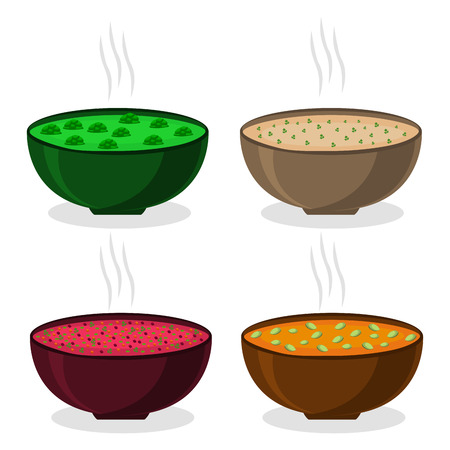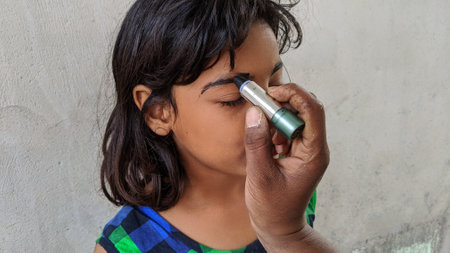Introduction to Desi Herbal Infusion & Kadha
In every Indian household, the wisdom of age-old traditions is lovingly passed down from one generation to the next. Among these treasured practices is the use of desi herbal infusions, commonly known as kadha, especially for children. Kadha is a natural concoction made with a blend of herbs and spices found in most Indian kitchens, such as tulsi, ginger, black pepper, and cinnamon. This traditional remedy has been an integral part of home care for kids, relied upon by mothers and grandmothers alike to strengthen immunity and soothe common ailments like coughs, colds, and sore throats. The cultural relevance of kadha goes beyond its health benefits; it represents a holistic approach to well-being that honours the body’s innate healing capacity while connecting families through shared rituals. In India’s vibrant tapestry of customs, giving kadha to children is more than just a home remedy—it is an act of love and self-care deeply rooted in our Desi heritage.
2. Common Herbs Used in Desi Kadha for Kids
Desi kadha, a time-honoured herbal infusion cherished in Indian households, is crafted using a blend of local herbs and spices renowned for their health-promoting properties. Each herb not only brings its own unique flavour but also contributes specific wellness benefits, especially for children’s immunity and overall well-being. Below, we introduce some of the most popular ingredients used in traditional Indian kadha for kids.
Tulsi (Holy Basil)
Tulsi, often revered as the “Queen of Herbs” in India, is known for its adaptogenic and immune-boosting properties. It helps protect children from common coughs and colds, supports respiratory health, and calms the mind, making it a staple in every desi home remedy kit.
Ginger (Adrak)
Ginger is a warming spice that aids digestion, eases nausea, and fights inflammation. In kadha, ginger acts as a natural decongestant and soothes sore throats—perfect for little ones during changing seasons or monsoon months.
Ajwain (Carom Seeds)
Ajwain is commonly used in Indian kitchens to relieve indigestion and stomach discomfort in children. Its carminative properties help expel gas, reduce bloating, and stimulate appetite—making ajwain-infused kadha a gentle yet effective remedy for tummy troubles.
Mulethi (Licorice Root)
Mulethi has been valued in Ayurveda for centuries as a throat soother and natural sweetener. It helps ease coughs, supports respiratory function, and offers anti-inflammatory benefits. Mulethi’s mild sweetness also makes kadha more palatable for kids.
Quick Reference Table: Key Herbs in Desi Kadha for Kids
| Herb/Spice | Local Name | Main Benefit for Kids |
|---|---|---|
| Tulsi | Holy Basil | Immunity boost, respiratory support |
| Ginger | Adrak | Aids digestion, relieves cold symptoms |
| Ajwain | Carom Seeds | Eases stomach discomfort, improves appetite |
| Mulethi | Licorice Root | Soothes throat, natural sweetener |
Cultural Touchpoint: Why These Herbs Matter in Indian Homes?
The use of these herbs goes beyond just physical health; they are woven into the fabric of Indian parenting traditions. Grandmothers often prepare fresh kadha at the first sign of sniffles or tummy aches, believing that these natural remedies connect children to their roots while gently nurturing their bodies. By choosing these familiar herbs, parents honour age-old wisdom while supporting holistic child development.

3. How Kadha Supports Childrens Wellbeing
Kadha, the traditional Desi herbal infusion, is a time-honoured remedy in Indian households, cherished for its profound impact on childrens holistic wellbeing. Rooted deeply in Ayurveda and local wisdom, Kadha is much more than just a drink; it’s a ritual of nurturing, blending nature’s finest ingredients like Tulsi, Ginger, Black Pepper, and Mulethi that are gentle yet effective for growing kids.
Physical Health Benefits: Immunity & Relief
One of the primary reasons mothers and grandmothers across India trust Kadha is its immunity-boosting properties. The potent combination of herbs works synergistically to strengthen children’s natural defence system, helping their bodies ward off seasonal infections. Especially during monsoon and winter months, a warm cup of Kadha can provide relief from common colds, coughs, and sore throats without relying heavily on synthetic medications.
Soothing & Gentle on Young Bodies
Kadha is prepared with carefully chosen herbs known for their soothing action. Ingredients like Ajwain and Saunf support digestion and ease tummy troubles that little ones often face. The anti-inflammatory qualities of ginger and turmeric help reduce discomfort from minor aches or mild fevers. For many Indian families, offering Kadha is not just about treating symptoms but ensuring comfort through nature’s own healing touch.
Nurturing Family Bonds Through Care
Beyond its physical benefits, Kadha plays a vital role in fostering emotional security and family connection. Preparing and sharing this herbal drink is an act of love—a gentle reminder that each child is cared for deeply. In many Desi homes, the ritual of brewing Kadha is passed down generations, becoming an intimate part of childhood memories where health and affection blend seamlessly.
In essence, Kadha stands as a symbol of mindful parenting rooted in Indian tradition—supporting children’s health physically while also nurturing their hearts through everyday rituals of warmth and care.
4. Safe Preparation Methods for Kids
Ensuring the safety and effectiveness of Desi Herbal Infusion & Kadha for children requires careful attention to preparation methods, appropriate dosages, and palatability. As every child’s constitution and age are unique, it is vital to tailor kadha recipes for young ones while preserving their traditional efficacy and avoiding common pitfalls.
Guidelines for Age-Appropriate Preparation
Kadha should be prepared with milder herbs and spices when intended for kids. Avoid overly strong or pungent ingredients such as excess black pepper or ginger, especially for toddlers. Always use fresh, clean water and ensure all herbs are thoroughly washed. For infants below 1 year, kadha is generally not recommended. For children above 1 year, start with very mild infusions and monitor reactions closely.
Recommended Dosages by Age Group
| Age Group | Dosage | Frequency |
|---|---|---|
| 1-3 years | 1-2 teaspoons (5-10 ml) | Once daily |
| 4-6 years | 1 tablespoon (15 ml) | Once to twice daily |
| 7-12 years | 2 tablespoons (30 ml) | Up to twice daily |
Tips for Making Kadha Palatable Without Losing Efficacy
- Add a touch of jaggery or honey (for kids above 1 year) to naturally sweeten the infusion.
- Squeeze in a few drops of fresh lemon juice after cooling slightly to enhance flavor and vitamin C content.
- Use tulsi, cardamom, and fennel as base ingredients—they provide gentle taste and aroma suitable for children.
- Avoid boiling kadha for too long; simmer lightly to preserve volatile compounds without making it overly concentrated.
Common Mistakes to Avoid
- Avoid adding salt or chili powder, which can irritate sensitive tummies.
- Do not force-feed kadha if your child resists strongly; instead, try offering in small sips mixed with warm water or diluted fruit juice.
- Always check with your pediatrician before introducing new herbal remedies, especially if your child is on medication or has allergies.
- Store any leftover kadha in the refrigerator for no more than 24 hours—fresh preparation is always best.
By following these simple yet essential guidelines rooted in Indian tradition, you can safely incorporate desi herbal infusions into your childs wellness routine while honoring both their health and the rich cultural heritage of kadha preparation.
5. Cultural Significance and Desi Home Rituals
Kadha and herbal infusions hold a special place in Indian households, transcending their medicinal value to become cherished cultural rituals. The practice of preparing kadha is deeply woven into the fabric of daily and seasonal desi life, especially for children. During monsoon and winter seasons, grandmothers are often seen gathering fresh tulsi leaves, ginger, and other locally sourced herbs to brew soothing concoctions that promise comfort and well-being. These moments are more than just about health; they’re about passing down intergenerational wisdom.
Intergenerational Wisdom: From Dadi’s Kitchen
Stories abound in every family—of mothers learning the perfect balance of spices from their mothers-in-law, of children watching in fascination as whole spices crackle in boiling water, releasing familiar aromas. Preparing kadha together becomes a bonding experience, a chance for elders to share not only their secret recipes but also tales of resilience and care from their own childhoods. This ritual fosters a sense of belonging and continuity, reminding children of their roots while nurturing their bodies.
Everyday Nourishment & Festive Traditions
In many desi homes, kadha is not reserved solely for sickness but is integrated into daily routines as a preventive measure. Some families have a specific “herbal tea time” after school or in the evenings, creating a nurturing pause where stories and laughter are shared over steaming cups. During festivals like Diwali or Holi, special versions of kadha—infused with saffron or cardamom—are lovingly prepared for children, blending celebration with holistic care.
Rituals Rooted in Nature
The preparation of herbal infusions often starts at home gardens or local markets, where fresh ingredients are chosen mindfully. Children are encouraged to help pluck tulsi leaves or grind spices, making them active participants in their own wellness journey. This connection to nature and hands-on involvement cultivates respect for traditional knowledge while strengthening family bonds—a true hallmark of desi home rituals.
6. Precautions and When to Consult a Doctor
Safe Use of Desi Herbal Infusions for Children
While Desi herbal infusions and Kadha have been trusted by Indian families for generations, it is important for parents to exercise care when introducing these remedies to children. Begin with small quantities and observe your child’s reaction. Always use age-appropriate recipes, as some spices and herbs may be too potent for very young kids. Avoid giving honey to infants under one year due to the risk of infant botulism.
Be Mindful of Potential Allergies
Children may be allergic to certain ingredients commonly used in traditional Kadha, such as ginger, black pepper, tulsi (holy basil), or cardamom. Watch for symptoms like rash, itching, swelling, or stomach upset after consumption. If your child has a known allergy or intolerance to specific herbs or spices, substitute with safer alternatives or consult an Ayurvedic practitioner for guidance.
Recognizing When Professional Medical Advice Is Needed
Desi herbal infusions can help support immunity and soothe minor ailments, but they are not substitutes for professional medical care. Seek immediate medical attention if your child experiences persistent high fever, difficulty breathing, severe abdominal pain, or any unusual symptoms after consuming a herbal remedy. If mild symptoms do not improve within a few days of home care, it’s best to visit a paediatrician.
Advice for Parents: Trust Your Intuition
Your intuition as a parent is invaluable—if something feels off about your childs health, do not hesitate to reach out to a healthcare provider. Always share details about any home remedies you’ve used so that your doctor can give informed advice tailored to your childs unique needs. Remember, while Desi remedies are part of our rich cultural heritage, modern medical support plays an essential role in safeguarding your child’s health and wellbeing.


